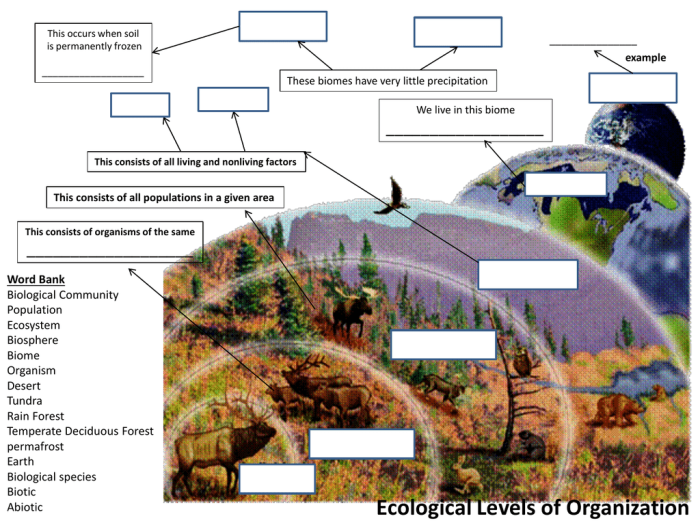Population ecology worksheet answer key – Unveiling the intricacies of population ecology, this comprehensive worksheet answer key empowers you with the knowledge to delve into the factors shaping species dynamics. Explore the methodologies employed to study population ecology, unravel the intricacies of population growth and decline, and delve into the captivating case study of a specific species to analyze its population dynamics.
1. Define population ecology and its key concepts
Population ecology is the study of populations, which are groups of individuals of the same species living in the same area. Population ecology seeks to understand how populations change over time, what factors affect their growth and decline, and how they interact with each other and their environment.
Examples of population ecology studies
- Studying the population size of a particular species over time
- Examining the factors that affect the distribution of a species
- Investigating the interactions between different species within a population
Importance of population ecology in understanding ecosystems
Population ecology is important for understanding ecosystems because it helps us to understand how populations interact with each other and their environment. This knowledge can be used to manage ecosystems and conserve species.
2. Describe the methods used to study population ecology
Methods used to study population ecology
- Direct observation:Observing and counting individuals in a population
- Mark-recapture studies:Capturing, marking, and releasing individuals to estimate population size
- Transect surveys:Walking or driving along a line and counting individuals within a set distance
- Quadrat sampling:Placing a square or rectangular frame over an area and counting individuals within the frame
Advantages and disadvantages of each method
Each method has its own advantages and disadvantages. Direct observation is simple and inexpensive, but it can be difficult to observe all individuals in a population. Mark-recapture studies can provide more accurate estimates of population size, but they can be time-consuming and expensive.
Transect surveys are relatively quick and easy, but they can be biased if individuals are not evenly distributed. Quadrat sampling is simple and inexpensive, but it can be difficult to choose representative quadrats.
3. Identify the factors that affect population growth and decline
Factors that affect population growth and decline
- Birth rate:The number of new individuals added to a population per unit time
- Death rate:The number of individuals removed from a population per unit time
- Immigration:The number of individuals moving into a population per unit time
- Emigration:The number of individuals moving out of a population per unit time
Relative importance of each factor, Population ecology worksheet answer key
The relative importance of each factor varies depending on the species and the environment. In general, birth rate and death rate are the most important factors affecting population growth and decline.
4. Analyze the population dynamics of a specific species
Analyzing population dynamics
- Collect data:Gather data on population size, density, and distribution
- Analyze data:Use statistical methods to analyze the data and identify trends
- Interpret results:Draw conclusions about the population dynamics of the species
Implications of the findings
The findings of a population dynamics analysis can be used to make informed decisions about the management of the species and its habitat.
5. Create a population ecology worksheet answer key

Worksheet design
The worksheet should include questions on all of the key concepts of population ecology, such as population size, density, distribution, growth rate, and decline.
Answer key
The answer key should provide correct answers to all of the questions on the worksheet.
Popular Questions
What is the significance of population ecology in understanding ecosystems?
Population ecology provides a crucial lens through which we can comprehend the intricate relationships between species and their environment, unraveling the factors that govern their abundance, distribution, and interactions.
How does population ecology contribute to conservation efforts?
Population ecology empowers conservationists with the knowledge to assess species vulnerability, identify threats, and develop effective strategies to protect and restore populations, ensuring their long-term survival.